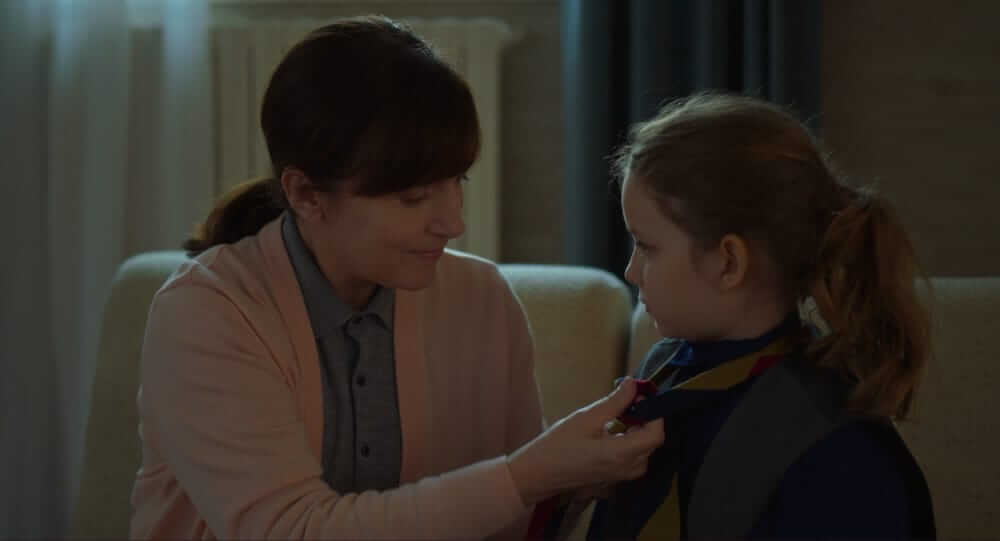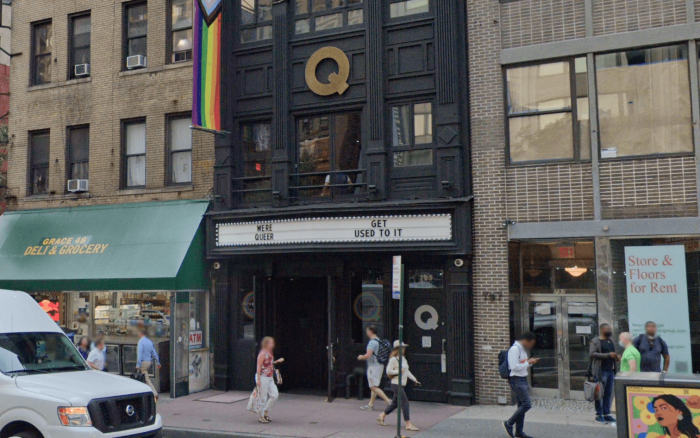An eight-year-old girl walks into the woods and enters a magic time warp. If this could be the plot of a Grimm’s fairy tale or one of Hayao Miyazaki’s animated features, it’s lesbian director Céline Sciamma’s “Petite Maman.” Although the girl is burdened by a grief she doesn’t fully understand, she gets to go back in time to bond with her own mother as a child. In most of her films, Sciamma has returned to the subject of girls whose experience of life in a sexist society is still being molded.
“Petite Maman” begins in a nursing home, with a scene bringing together three generations: elderly women, mothers and their daughters. Nelly (Joséphine Sanz) goes from room to room, greeting elderly women. Her mother Marion (Nina Merisse) is seeing her own mother in the final days of her life. After the death of Nelly’s grandmother, her family temporarily relocates to her house in order to empty it out. While her mother and father (Stephane Varupenne) are busy, Nelly plays in the woods. She comes across another young girl (Sanz’s real-life sister Gabrielle) building a tree fort. This girl turns out to be Marion, back when she was the same age as Nelly. The two bond immediately, but the time which they can spend together is limited.
“Petite Maman” might be called a fairy tale, but it exists without the threat of physical violence in the uncut versions of Grimm’s stories. But while its tone is gentle, it suggests time travel (whether taking place in fantasy or reality) as a response to death. It’s also a fantasy devoid of special effects and the usual genre trappings. It has no use for explanations. The two time frames of “Petite Maman” simply coexist. The film uses bright colors and beams of sunlight cutting through the frame’s center. It was shot on a set rather than an actual house, allowing for tight control. This allows an unusual trick: Marion and Nelly’s houses are the same home at different points in time. One might even miss this and just think they look similar, thanks to the production design flipping around their decor.
“Petite Maman” suggests a children’s version of certain landmark films about female friendship, especially Jacques Rivette’s “Celine and Julie Go Boating.” The fact that Marion and Nelly are so young lets the film skip over the more dangerous — or at least disappointing — aspects of being a teenage girl or adult woman. But it also presents its plot as a fictional device and storytelling as a form of communication between Marion and Nelly. The concept of time travel is an extension of giarlish playfulness, especially when Nelly and Marion play dress up.
Sciamma carefully constructed a world where time remains indeterminate. There are few chronological markers. The costumes are designed to avoid dated fashions. The film makes use of an electronic pop song which could have either been released in the ‘80s or made by a band imitating that sound. (In fact, it’s an original, composed by Jean-Baptiste de Laubier/Para One and Sciamma.) Instead of a clearly defined present or past, ‘Petite Maman” exists in a liminal space that could be both, either, or neither.
Sciamma’s work has been dedicated to female experiences usually left offscreen or filtered through the male gaze. Offscreen, she’s a feminist activist who created a campaign for gender parity in French cinema. Her intention to create a distinctly female voice was most apparent in her most popular and acclaimed film, “Portrait of a Lady on Fire,” but her films about teenagers share some common ground with the lengthy French tradition of serious examinations of childhood and adolescence. (She’s collaborated on screenplays with gay director André Téchiné, whose “The Wild Reeds” is a classic about a group of teenage friends in the ‘50s.) “Portrait of a Lady on Fire” worked on a larger scale than she usually does, but I found the fragmentary modesty of “Petite Maman” more impressive.
With one exception, all of Sciamma’s films as a director have been about girls. (The protagonist of “Tomboy” may be a trans boy, but that’s left open to the viewer’s interpretation.) Making serious films about children and teenagers is a long, respected tradition.) “Portrait of a Lady on Fire” sought to bring a lesbian vision of female artistry to a wider canvas; instead of “The 400 Blows,” it jousted with more traditional visions of the 19th-century women’s lives. The politics of “Petite Maman” may be more subtle, but it suggests the world girls can create on their own, as well as defusing the power dynamics between real-life parents and their kids and turns them into accomplices. It also allows Nelly to see how her mother was formed; for instance, the young Marion observes her mother’s health problems and says that she’ll need help to preserve her own health. Nelly and the young Marion live in a world of possibilities closed off to adults. The film wonders why women lose this ability to access magic.
“PETITE MAMAN” | Directed by Céline Sciamma | Neon | In French with English subtitles | Opens April 22nd at the Angelika Film Center and Film at Lincoln Center































